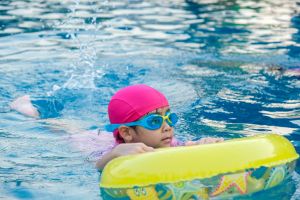
Source: Teerasak1988 / Getty
As the summer season approaches and families spend more time near water, it’s crucial to prioritize water safety, particularly when it comes to preventing child drowning incidents. Here are some essential tips to keep in mind:
- Supervision is Key: Always provide close and constant supervision when children are near water, whether it’s a pool, lake, or beach. Designate a responsible adult as a designated “water watcher”.
- Learn CPR and First Aid: Knowing cardiopulmonary resuscitation (CPR) and first aid can be life-saving in the event of an emergency.
- Teach Water Safety: Educate children about water safety rules from an early age. Teach them to always swim with a buddy, never go near water without an adult present, and the importance of following pool rules. Emphasize that they should never enter the water without permission or go beyond their skill level.
- Use Proper Safety Measures: Install barriers, such as fences with self-locking gates, around home pools to prevent unsupervised access. Make sure pool gates and doors leading to the water are securely locked. Use approved safety covers for pools and hot tubs when not in use.
- Ensure Proper Swimming Skills: Enroll children in swimming lessons taught by certified instructors. These lessons can teach essential water survival skills and increase their confidence in and around water. Remember that swimming lessons do not make a child drown-proof, so supervision is still necessary.
- Wear Appropriate Safety Gear: Encourage children to wear U.S. Coast Guard-approved life jackets when participating in water activities, especially if they are inexperienced swimmers or in open water. Inflatable toys and floaties are not substitutes for life jackets.
- Be Aware of Water Hazards: Teach children to be mindful of potential water hazards, such as deep areas, strong currents, and underwater obstacles.
- Be Prepared for Emergencies: Keep rescue equipment, such as a reaching pole or life preserver, near the pool or body of water. Post emergency contact numbers by the poolside, and have a phone nearby to call for help in case of an emergency.
















